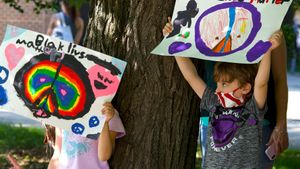Following the recent Diwali festivities, India's air quality paints two starkly different pictures across regions. While some places are enjoying relatively clean air, others are grappling with alarming pollution levels. The festival, marked by vibrant celebrations and the bursting of firecrackers, has brought about significant environmental consequences, as evidenced by the contrasting air quality indices (AQIs) reported from various cities, including the capital, Delhi.
Delhi is currently facing severe pollution levels, with many areas registering AQI readings above 400, categorizing the air quality as 'very poor' to 'hazardous'. According to the Central Pollution Control Board (CPCB), the AQI measured around 358 on the morning of November 7, 2024, with certain regions like Bawana reaching 412. Such levels have prompted urgent governmental action as the Supreme Court has expressed discontent with the current state of air quality and the lack of effective enforcement of firecracker bans. Specifically, the court has demanded reports detailing government measures to curb pollution and questioned why existing regulations were not properly adhered to during Diwali celebrations.
While the capital chokes on its smoggy aftermath, there's a silver lining as Himachal Pradesh showcases significantly improved air quality post-Diwali. According to environmental expert Dr. Suresh Kumar Atri, Shimla has recorded AQI levels below 50, reflecting a 30-40% reduction in pollution levels compared to previous years. This notable improvement is attributed to the rising awareness of eco-friendly practices among residents, emphasizing the impact of initiatives like the promotion of ‘Green Diwali’ and the use of less polluting crackers.
On the other hand, cities such as Bengaluru are experiencing their own struggles with air quality, which has dipped to 'moderate' levels, around AQI 110, primarily due to vehicular emissions. Cities like Udupi and Thrissur, along with other regions of Southern India, have reported significantly healthier air quality, enjoying levels deemed 'good' according to CPCB standards. This demonstrates the urgent need for collective action and continued awareness for cleaner air and sustainable celebrations across various regions.
The current pollution crisis poses dire health risks for the population, particularly for those with pre-existing respiratory conditions, children, and the elderly. The combination of particulate matter (PM2.5) and other harmful pollutants significantly affects air quality and health. Public health experts warn of potential long-term effects of exposure to such high pollution levels, emphasizing the necessity for immediate actions to control emissions and improve public awareness.
Government officials are being called to step up their game, not just for firecracker regulation during festive seasons but also for longer-term strategies to address the root causes of pollution. The CPCB's AQI classification clearly indicates areas of improvement needed for future years. Citizens are also encouraged to play their part by supporting green initiatives and adopting practices aimed at reducing air pollution.
The Supreme Court's involvement highlights the gravity of the situation, with the judiciary reiteratively emphasizing government accountability for the health of its citizens. The current air quality scenarios serve as reminders of how festivities, if not suitably managed, can translate celebrations of culture and tradition, such as Diwali, directly impacting the environment and health.
Moving forward, it is clear there is no quick fix to the air quality crisis, especially following celebrations. Both government and citizens must jointly work on sustainable practices for events, ensuring such celebrations preserve cultural essence without compromising public health. The path to cleaner air seems long but requires commitment and persistence to be enduringly fruitful.



